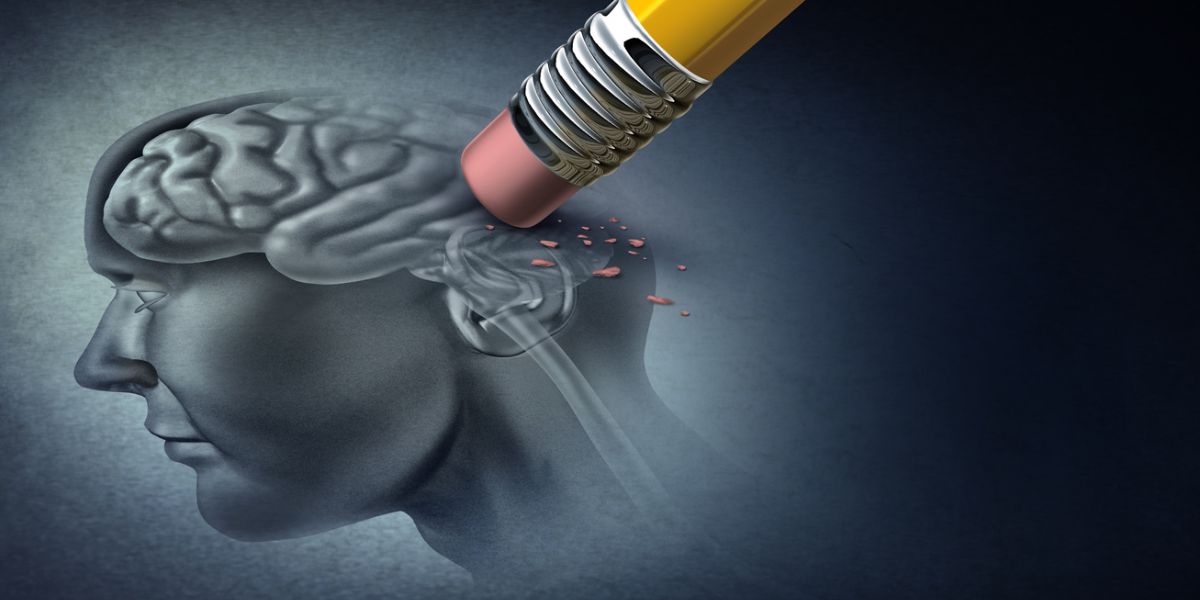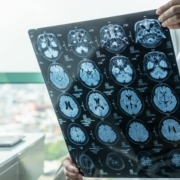Similarities and Differences Between Alzheimer’s and Dementia
Dementia is used generally when speaking about a decline in mental health, while Alzheimer’s Disease is a specific disease of the brain. Alzheimer’s disease has been said to be a “type” of dementia and a “cause” of dementia. Dementia covers symptoms such as memory loss and a decline in reasoning ability. Alzheimer’s accounts for between 60 and 80 percent of dementia cases. Sometimes it is difficult to see a clear distinction between the two. Many people use the names interchangeably when discussing similarities and differences between Alzheimer’s and Dementia.

WHAT IS DEMENTIA?
Dementia is a general term used to classify a collection of brain disorders that make it difficult to think clearly, have a loss of short- and long-term memory, have a lack of ability to make decisions, and have an inability to control emotions. There are many causes and types of dementia, and Alzheimer’s disease is just one type, but it is the most common.
Dementia is not only about forgetting simple things, like where you left your phone or keys, but it usually also includes the following characteristics:
- Loss of short- and/or long-term memory
- Inability to focus and concentrate
- Difficulty with speech and communication
- Difficulty reasoning or thinking clearly
- Inability to make decisions
- Delusions or hallucinations; seeing things or hearing things that are not there
- Paranoia; developing a feeling of persecution
In most cases, all types of dementia will also have a wide range of behavioral symptoms that range from anxiety, depression, anger issues, impulsiveness, uncontrolled motions of the body, and irritability.
In many cases, the different types of dementia share similar symptoms, and the diagnosis to determine which type of dementia the patient has can be difficult.
CAUSES OF DEMENTIA
There are many causes of dementia, and they include the following:
- Alzheimer’s disease which accounts for 60 to 80 percent of cases
- Parkinson’s disease
- Huntington’s disease
- Vascular dementia
- Mixed dementia
- Lewy body dementia
- Infections like HIV
- Stroke
- Repetitive head trauma
- Depression
- Chronic illicit drug abuse
TYPES OF DEMENTIA
ALZHEIMER’S DISEASE
Many people try to determine the similarities and differences between Alzheimer’s and dementia. The formation of plaque in the brain is being studied to see how it affects people with AD. What are the best treatment centers for Alzheimer’s disease? We always recommend speaking with your doctor. Today, there are nearly 5.4 million individuals in the U.S. who have been diagnosed with Alzheimer’s disease. In general, Alzheimer’s disease affects older people, typically more than 65 years of age, but, in rare cases, it may even occur in people younger than 50. Once the diagnosis of Alzheimer’s disease is made, survival ranges from 3 to 12 years, with the majority of individuals ending up in long-term care facilities.
In Alzheimer’s disease, the damage to the brain starts several years before the symptoms appear. There is an abnormal buildup of plaques and neurofibrillary tangles in the brains of people with Alzheimer’s disease. As the disease progresses, the nerve cells die and the size of the brain shrinks.
The diagnosis of Alzheimer’s disease is difficult to make because there is no absolute confirmatory test. The final diagnosis is often made after an examination of the brain after death. Healthcare workers can make a diagnosis of Alzheimer’s disease in living patients about 90 percent of the time.
The symptoms of Alzheimer’s disease include:
- Disorientation
- Apathy
- Depression
- Difficulty swallowing
- Loss of recent memory
- Impaired judgment
- Changes in behavior
- Difficulty walking
- Wandering
What are the best treatment centers for Alzheimer’s disease? Talk to your doctor. While some treatments today can help manage Alzheimer’s symptoms, there is no cure.
VASCULAR DEMENTIA
Vascular dementia is the second most common type of dementia, and, unlike Alzheimer’s disease, it tends to occur in middle-aged people between the ages of 55 and 70. Of all the cases of dementia, it is estimated that about 10-20 percent of people have vascular dementia, and many remain undiagnosed. In vascular dementia, the cause is two-fold:
- Blockage of the tiny blood vessels in the brain; this results in compromise of oxygen to parts of the brain
- Secondly, the cause is high blood pressure; the elevated blood pressure damages the tiny fragile blood vessels in the mid-part of the brain, leading to their rupture
Vascular dementia is usually caused by injury to the very small blood vessels in the midbrain and the result is a ministroke that occurs from bleeding in the brain. In the past, vascular dementia was referred to as multi-infarct dementia.
The presentation of vascular dementia also differs from Alzheimer’s disease. Memory loss is not common and, unlike Alzheimer’s disease, the symptoms present much more quickly after the injury. Finally, the symptoms usually depend on what part of the brain is affected. In general, patients with vascular dementia will present with:
- Disorientation
- Confusion
- Difficulty speaking or understanding what is spoken
- Headache
- Poor balance and dizziness
- Difficulty with gait
- Numbness or paralysis on one side of the body or face
If the condition is not treated or recognized, more blood vessels and nerves are damaged, and the severity of the symptoms increases. Later, the patient may develop the following symptoms:
- Poor judgment
- Unable to plan or make decisions
- Uncontrollable crying or laughing
- Inability to concentrate or focus
- Inappropriate social behavior
- Difficulty finding the right words to speak
There is no specific drug to treat vascular dementia, but evidence shows that control of blood pressure, diabetes, and high cholesterol is very important. This means discontinuing smoking, eating healthy, getting regular exercise, and remaining compliant with blood pressure medications.
LEWY BODY DEMENTIA
Lewy body dementia (LBD) is the third most common type of dementia. The key characteristic of this disorder is the deposit of proteins called Lewy bodies in the nerves involved in memory, thinking, and movement. They may also have the presence of plaques and tangles in the brain. Patients with Lewy body dementia can develop the following symptoms:
- Progressive decline in their mental abilities
- Changes in attention span
- Visual hallucinations
- Characteristics of Parkinson’s disease – rigid or stiff muscles
- Slow movements
- Tremors
- Walking difficulty
- Can have problems regulating blood pressure, digestive processes, and sweating
- Loss of cognitive function
- Sleeping difficulties
- Depression
- Apathy
In general, Lewy body dementia is more common in older men and those with Parkinson’s disease. The diagnosis of Lewy body dementia is based on signs and symptoms and other conditions have to be ruled out. While there is no cure for this type of dementia either, symptoms can be helped with medications.
MIXED DEMENTIA
Some people may develop brain changes that are due to more than one type of dementia; this is known as mixed dementia. For example, a person may have damaged blood vessels in the brain (vascular dementia) and also the presence of amyloid plaques and neurofibrillary tangles at the same time.
FRONTOTEMPORAL DEMENTIA
Frontotemporal dementia is a type of dementia that includes damage to the nerve cells at the sides and front of the brain. This type of dementia classically presents with behavior and personality changes, and difficulties with language. There are several variants of this dementia, but all are progressive.
CREUTZFELDT-JAKOB DISEASE
Creutzfeldt-Jakob disease is a very rare form of dementia that is linked to an abnormal protein (prion). The key feature is the very rapid brain damage and mental decline. Most patients die within a matter of months or a few years. The individual will present with jerky movements, mood changes, confusion, and difficulty with ambulation. Another variant of the same disease is linked to eating the brain of infected cows, known as mad cow disease.
HUNTINGTON’S DISEASE
Huntington’s disease is an inherited type of dementia that is passed on in families. The individual develops bizarre movements and there is also rapid mental decline. Most patients die young because there is no treatment.
DEMENTIA TREATMENT
The treatment of dementia depends on the cause. Conditions that are most likely to respond to treatment include those caused by:
- Metabolic disorders (e.g., low blood sugar)
- Infections like HIV
- Some cancers
- Drug abuse
In the majority of dementia cases, the symptoms are not reversible. In all dementia cases, the caregivers can benefit from the use of supportive services like health aides. In advanced cases, the individual may have to be admitted to a nursing home or an assisted living facility.
PROGNOSIS
The outlook for people with dementia depends on the cause. In general, the outlook and quality of life are very poor. Available treatments may decrease some symptoms, but they can also have many adverse side effects. The lifespan of people with dementia is shortened and, hence, once the diagnosis is made, family members need to take each day at a time and make the most of it.
CANO HEALTH
Cano Health is an organization that includes a staff of doctors and nurses who want you to live your best life. Their goal is to improve patients’ lives through wellness, preventive, and primary care services. The staff at Cano Health can help you understand the similarities and differences between Alzheimer’s and Dementia. The Centers for Medicare & Medicaid Services recognize Cano Health as a Five-Star provider. If you would like to learn more about how Cano Health can help you, call them today at 1-855-208-7874.






